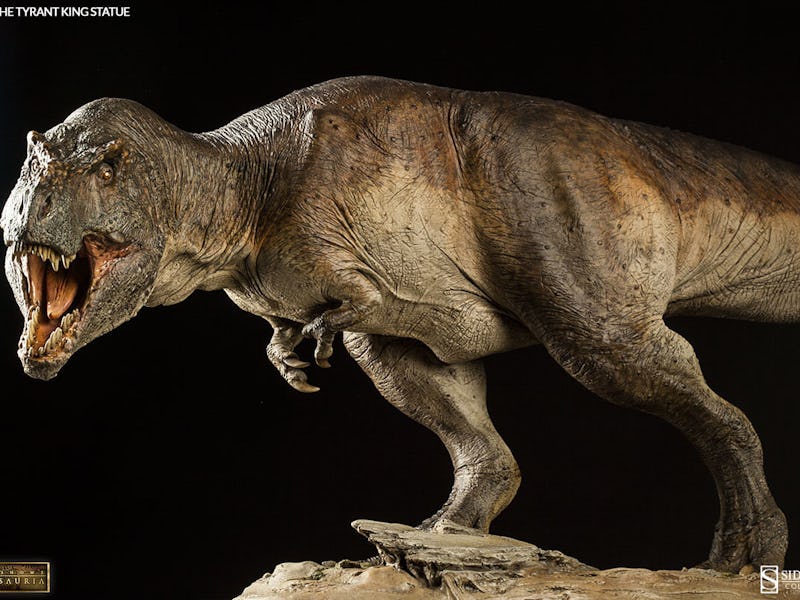What if a Tyrannosaur Got Loose in Minneapolis?
Going into Theodore Wirth Park would be a very bad idea.

There’s a Tyrannosaurus Rex loose in Minneapolis. Why? Because there is — it’s called a premise. The important thing right now is that we figure out what the animal is going to do and who’s at risk.
Would the dinosaur throw a full-blown, Spielbergian tantrum amid the 3.8 million denizens of the City of Lakes? When the T. Rex visited San Diego in the Jurassic Park sequel, it ate a dog and then picked a fight with public transport. But a real T. Rex isn’t an avenging nuclear bomb parable. First off, if our terrible Minneapolian lizard is hungry it has a few options: As both a scavenger and a hunter it could make do with a few dozen Juicy Lucy burgers out of a dumpster instead of chomping a Twins fan in half. In order to stave off hunger, it would need to eat one human every other day or so assuming a 40,000-calorie diet and 175-pound humans.
So the T. Rex strolls through downtown Minneapolis, snags a University of Minnesota coed or Teddy Bridgewater, and trudges off at 10 miles an hour. The animal would likely be able to keep that up for about 30 minutes while looking for a place to hide. And you better believe that’s exactly what would be happening. Almost all animals, when given the option of hiding or fleeing, choose the latter. This is specifically true of alpha predators: Consider the mountain lion that stumbled into downtown Mountain View, California then hid in a row of hedges for nine hours. Killers are bullies, not belligerents.
In a 5-mile radius of downtown Minneapolis there are a fair number of parks in which to hide — the biggest, Theodore Wirth Park, is about nine-tenth the size of Central Park and would provide a bit of canopy cover even for a 15-foot-tall critter. That’s the likely choice.
That being said, bite marks on a fossilized T. rex skull offer evidence that juvenile tyrannosaurs fought each other. What that means is that the animal might avoid humans but pick fights with cars and trucks or large-scale urban statuary. Claes Oldenburg and Coosje van Bruggen’s Spoonbridge might very well get toppled.
Whatever fights the T. Rex picks, it will likely spend the majority of its time lurking in the woods. The gymnosperms might look different 65 million years in the future, but at least the dinosaur has a frame of reference for vegetation. That means that a grove would likely provide a lovely backdrop to the inevitable showdown with the American military. Probably, but that’s an unlikely result. As soon as a wild predator kills a human, an animal’s life expectancy nosedives. Plus, there’s plenty we could learn from a still-warm, non-biting corpse. There would be loads of fresh DNA to sequence and no risk of future ingestion. Should Rex just eat a poodle and manage to keep the property damage to a minimum, the odds of survival get a little better, as long as Minneapolis animal control has stocked up on ketamine tranquilizer darts.
If the dino goes down, it’s safe to assume it will wake up in the hands of the federal government, perhaps in some sort of controlled environment where the oxygen and carbon dioxide levels could be tuned. We’d have a few years of press releases and conferences on dino behavior and physiology. People would get tenure. Bao Bao would not get a new neighbor at the National Zoo. The Vikings wouldn’t make the playoffs.
Previous Horrifying Unlikely Scenarios: What If a Meteor Hit Connecticut? What If There was a Nuclear Meltdown in Kansas?